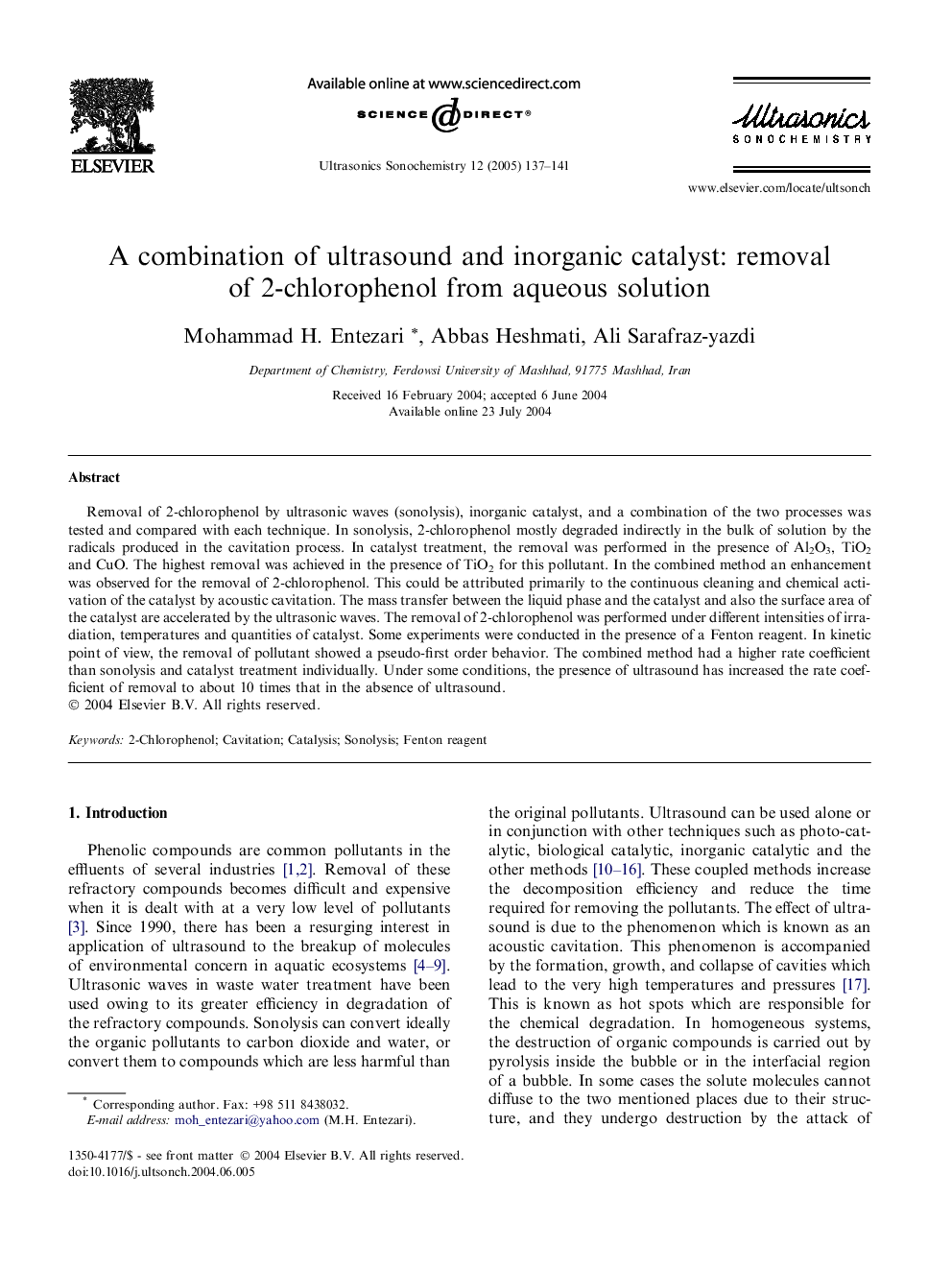| Article ID | Journal | Published Year | Pages | File Type |
|---|---|---|---|---|
| 9758861 | Ultrasonics Sonochemistry | 2005 | 5 Pages |
Abstract
Removal of 2-chlorophenol by ultrasonic waves (sonolysis), inorganic catalyst, and a combination of the two processes was tested and compared with each technique. In sonolysis, 2-chlorophenol mostly degraded indirectly in the bulk of solution by the radicals produced in the cavitation process. In catalyst treatment, the removal was performed in the presence of Al2O3, TiO2 and CuO. The highest removal was achieved in the presence of TiO2 for this pollutant. In the combined method an enhancement was observed for the removal of 2-chlorophenol. This could be attributed primarily to the continuous cleaning and chemical activation of the catalyst by acoustic cavitation. The mass transfer between the liquid phase and the catalyst and also the surface area of the catalyst are accelerated by the ultrasonic waves. The removal of 2-chlorophenol was performed under different intensities of irradiation, temperatures and quantities of catalyst. Some experiments were conducted in the presence of a Fenton reagent. In kinetic point of view, the removal of pollutant showed a pseudo-first order behavior. The combined method had a higher rate coefficient than sonolysis and catalyst treatment individually. Under some conditions, the presence of ultrasound has increased the rate coefficient of removal to about 10 times that in the absence of ultrasound.
Related Topics
Physical Sciences and Engineering
Chemistry
Chemistry (General)
Authors
Mohammad H. Entezari, Abbas Heshmati, Ali Sarafraz-yazdi,
